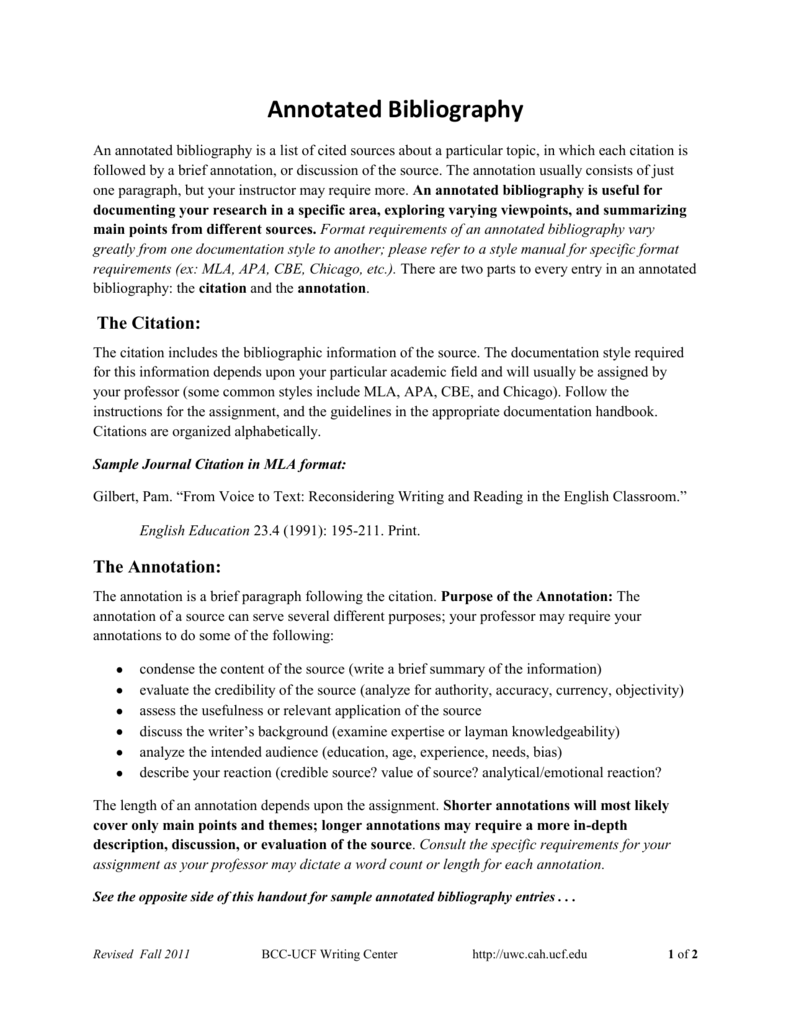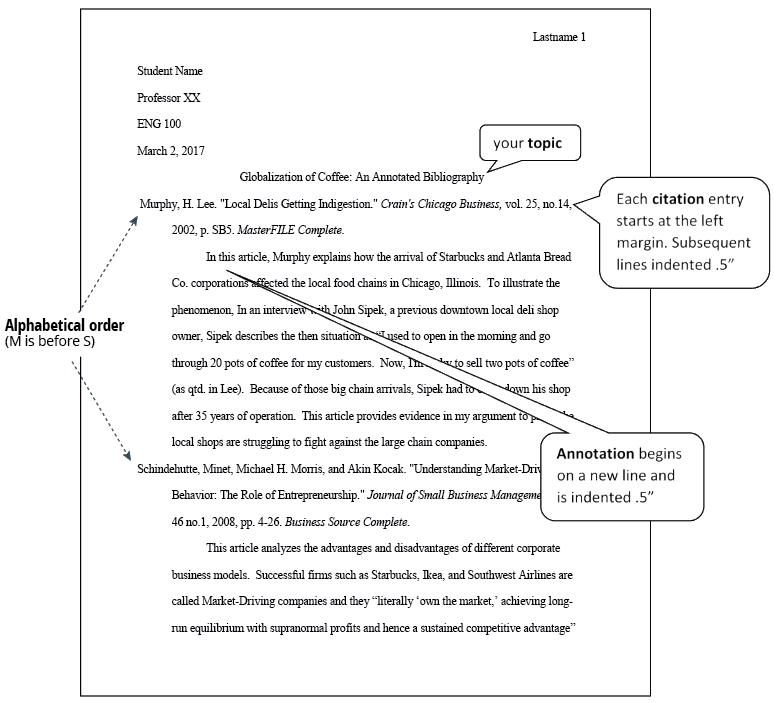An annotated bibliography is just what you need to earn a few extra brownie points from your professor. It adds accuracy, relevance and credibility to your paper. Also, with an annotated bibliography, you can provide more details, that would have otherwise been missed.
An annotated bibliography is quite different from a regular one. For starters, it contains deeper insights into the source material. You can add a short paragraph about the citation (roughly 100-150 words).
If you are wondering about how to write an annotated bibliography, step by step, then I got you covered. It covers almost everything you need to know to get it done!
1} What makes annotated bibliographies better?
Annotated bibliographies are any day better than the standard ones. They give the student a chance to provide a brief overview of the source material. You can enter a short para to explain why and how you used the text in your paper.
Rather than merely listing all the sources, you dedicate a section to expand upon them. The reader can gauge your level of research and attention to detail with an annotated bibliography.
It adds a whole new dimension to your research, making it more in-depth, rational and authentic. The annotated paras follow a specific tone and format though.

2} How to write an annotated bibliography, step by step
In this section, we will learn about the basic outline or format of an annotated bibliography. First, you need the list of sources cited in the paper. This includes all the books, articles, journals and online resources you referred to.
Then, you need some additional information on these sources. State the background of the author, the major themes explored in the text, the modern-day implications etc. This adds more weightage to your paper.
Now, you don’t have to add annotations for each reference used for your research. The trick is to pick and choose the most relevant sources and discuss them.
There are five main elements of every annotated bibliography.
- Title of the text
- A short introduction
- The citations of the source materials
- Summary of your entries
- Evaluation of the entries.
You can follow these steps to structure your annotated bibliography.
Step-1. Picking the right topic
First, you need a list of all the books, journals and websites cited in the paper. These references are then sorted into two categories- primary texts and secondary texts.
The primary documents are the main books/works that form the core of your research. The secondary sources include everything else.
You need not add annotations about all the sources used for the paper. Pick books and journals that hold maximum weightage. You can consult your professor to pick the right topics.
Step 2: Refer to citations
After selecting the sources, you need to cite them as per the formatting style approved by your professors. As per my knowledge, there are three main referencing styles. The MLA style is used for arts and humanities-related topics.
The APA referencing is suitable for scientific studies. Harvard structuring goes well with social sciences. A quick online search gives you a list of citations tools for getting quick references.
CiteFast is one such reliable tool for generating citations on the go. Arrange your citations alphabetically, and in ascending order.
Get Assisted by Experts to write an annotated Bibliography
Step 3: Summarize the sources
I suggest students refer to Purdue’s OWL or online writing lab guidelines for some accurate samples on annotations. Add a short introduction before you summarize the texts. This sets the tone of your summary
Summarizing the contents of a source text is easier said than done. List down the main points or themes of the book. You can then relate these pointers to your research topic.

Step 4: Analyze the author’s background
Students often add a section about the author’s personal life and history to enhance their annotations. Include only details that pertain to the text. Any other irrelevant information only takes up space and adds no value.
Add the publication history, year of publication and reception of the text to expand your research. Keep your annotated bibliographies short and to the point.
Step 5: Set the context
The primary purpose of an annotated bibliography is to enhance the reading experience. It highlights and reinstates the main points of your paper.
There are two main types of annotated bibliographies- descriptive and analytical ones. The descriptive bibliography summarizes the source. It is quite similar to an abstract. The critical ones aim at highlighting the unique features of the text.
The essential or analytical bibliography examines the pros and cons of the argument. It also describes the practical application of the text in your research. I recommend students go for an analytical bibliography for deeper insights.
Step 6: State your central argument
Annotated bibliographies can either be part of a more significant research project or act as a stand-alone work. Structure your content in a way that makes sense even if read separately from your research.
The central argument of the entry is first stated in summary and then discussed in the evaluation sections. You can compare it with other listings and reflect upon your understanding of the topic as well.
Step 7: Evaluate each source
The last and most crucial part of an annotated bibliography is where you critically evaluate the text.
- How does the source affect or contribute to your central argument?
- What are the main themes explored in the text?
- How authentic is the source material?
- What are the limitations of the text?
- These are some questions you must discuss.
The evaluation section is pretty similar to the abstract you find at the beginning of any article. You can draw some inspiration from the abstract. Although, don’t try to plagiarise or paraphrase it without proper credit.

3} What to include in an annotated bibliography?
An excellent annotated bibliography is short but holistic. Most students make the mistake of cramming this section with unnecessary details. Pick and choose the information that is relevant to your research.
For instance, if you are critically analyzing a literary text, then add an annotation about the author’s background. It gives the reader more in-depth insights into the context of the book.
Here are some annotated bibliography examples, formatted in different styles which you can explore
Get Assisted by Experts to write an annotated Bibliography
Sample 1 for APA referencing
Use the standard APA 6th referencing formatting to cite the source text. Then add 2-4 lines to summarize the main argument posed by the source. Evaluate these facts in another line or two.
The summary states the significant themes and features of the text. The next section gauges its credibility and context of the source. You can then reflect upon these findings and add your two cents to the topic.
Alphabetize your citations, arrange them within a one-inch margin and put double spaces between each entry.

Sample 2 for MLA referencing
The MLA referencing style is slightly different from the former. Here, the student has more flexibility to arrange and expand their argument. Cite your source material as per the MLA citation guide 8th edition by Columbia College.
Add a summary to state the intent, purpose and contents of the text. Describe the main ideas explored in the book/journal/paper. Evaluate these themes and critically analyze them.
Compare these entries with the other annotations. Try to relate these findings with your research. Highlight how the source was helpful for your inquiry. Also, state the author’s interpretation of the text.
Dedicate a para to each annotation, extending about 3-6 sentences. I recommend students cut short their annotations to about 100-150 words. Also, double-spaces between lines is mandatory.

Sample 3 for Harvard referencing
Cite the source text as per the Harvard referencing style guide by UNSW Sydney. Write the annotation below the reference. Start with a short intro, then talk about the research methodology used. Next, you discuss the scope, usefulness and drawbacks of the text.
Analyze the primary themes of the source material and relate it to your argument. Reflect upon the relevance of these pointers and how it enhances your research. Don’t add any in-text citations to this section.

4} Need for annotated bibliography
Annotated bibliography highlights the main aspects of your paper in a nutshell. It is a smart and creative way to reinstate your arguments towards the end of your research. This section also gives you the space to add some extra information about the author or source material.
With an annotated bibliography, you get an in-depth insight on your reference text. The background, context, publication history, core themes, author’s views etc. are discussed here.
You can refer to the referencing guidelines given by your university to know more about inserting annotations.

5} The bottom line
Professors prefer annotated bibliographies over standard ones. Anyone reading your paper can gauge the level of research that was done for the essay. It also gives the reader more reference material and sources to browse through.
Following these steps, you can write a detailed annotated bibliography in no time. I would suggest you work on this section after writing the paper. Dedicate a day to collect, sort and evaluate your sources.
I hope this guide would help you write accurate annotations for your bibliography. All the best!
Get Assisted by Experts to write an annotated Bibliography

 WhatsApp Us
WhatsApp Us